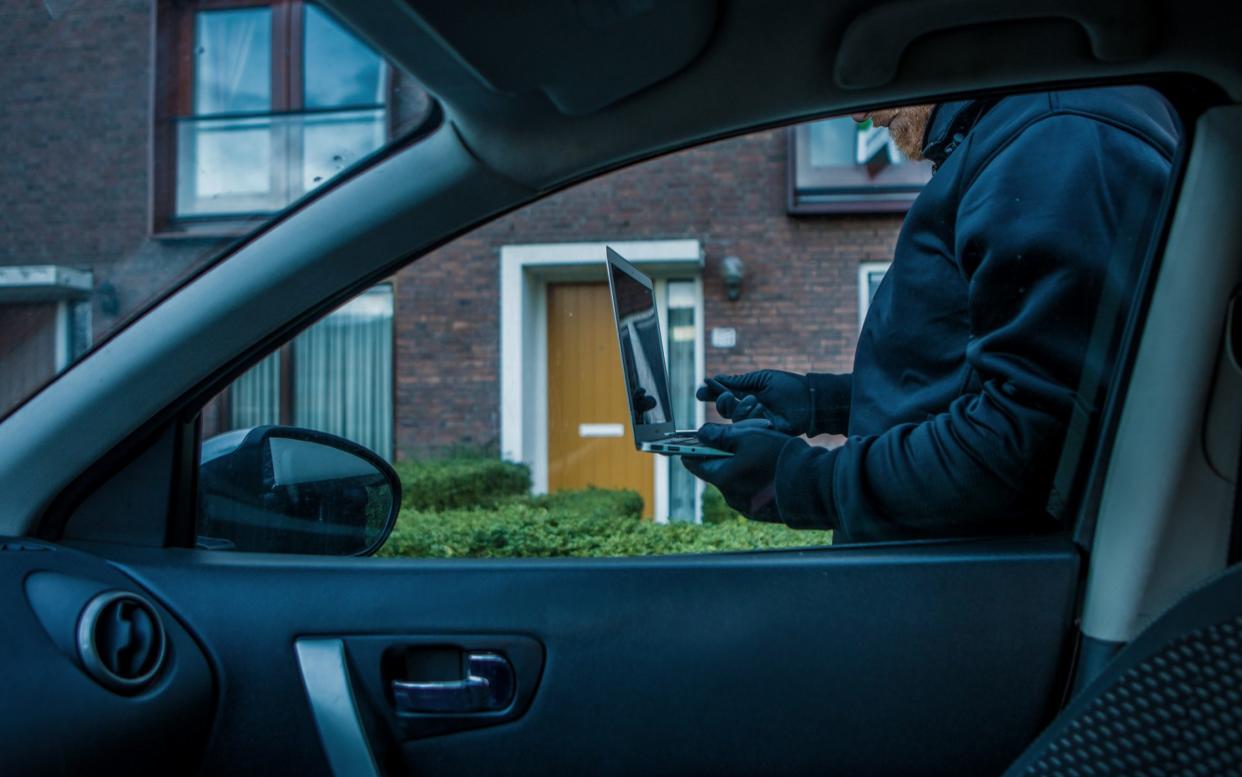Car hacking technology fuels sharp rise in vehicle thefts

Car hacking technology bought online by organised crime gangs is fuelling an almost 20 per cent rise in vehicle thefts, the National Crime Agency (NCA) has revealed.
Criminals are increasingly turning to devices which enable them to hack into and drive off with high-end cars - without having to steal the keys, the NCA’s annual national threat assessment report said.
The so-called “electronic compromise” thefts also bypass keyless fobs, which have been the subject of increased security by car manufacturers after being targeted by thieves in recent years.
The devices hack into the controller area networks of cars, allowing them to be unlocked. They can be bought for as little as £2,500 online or on the encrypted message service Telegram.
“Methods of theft have continued to evolve, with offenders turning to new technology to facilitate thefts such as electronic compromise thefts often committed by organised crime groups.
‘Traditional methods’
“Offenders continue to employ traditional methods of theft such as car key burglaries,” said the NCA.
The devices are thought to have contributed to a 19 per cent rise in vehicle thefts in 2022, when 110,739 cases were reported - up from 93,006 in 2021.
However, the NCA warned it was getting harder to recover stolen vehicles as criminals use so-called “chop shops” to butcher them for parts for other cars - or ship them abroad.
“The high levels of organisation make it difficult for law enforcement to recover vehicles with criminals using further methods such as tampering with vehicle information to avoid detection,” said the NCA.
Graeme Biggar, head of the NCA, warned that the rising cost of everyday life threatened to cause a surge in “high harm” car thefts, robberies and burglaries, as gangs react by trying to make more money through offending.
He said criminals had already “exploited the cost of living crisis” to put “more people at risk of crime”, while adding that it was “highly likely that all areas of organised acquisitive crime will increase” further in the coming years.
Drugs spike
Mr Biggar also disclosed that cocaine use had increased by a quarter in large urban areas in just a year amid low costs and high supply.
The trend was revealed by tests of sewage water in big urban areas including London, which Mr Biggar said was a “much better way of assessing the quantity of drugs being consumed than anything we’ve had before.”
He said officials had previously relied on the quantity of drug seizures and other police data.
It emulates the Australian Criminal Intelligence Commission, which produces an annual report on drug consumption based on analysis of the metabolised products from drugs, including cocaine.
The surge in use came as cocaine prices fell by about 30 per cent last year in the UK, while global production rose by 13 per cent to an estimated 2,132 tonnes in 2021, according to the NCA.
It estimated Britons consumed some 120 tonnes of cocaine and 40 tonnes of heroin last year.
Criminals ‘used as proxies’
Mr Biggar also disclosed that hostile states were using organised crime gangs to target individuals and dissidents in the UK - and that their actions included “threats to life”.
“The Russian state has long tolerated and occasionally tasked the cybercrime groups on its territory, and had links with its oligarchs and their enablers,” he said.
“And over the last year we have seen hostile states beginning to use organised crime groups - not always of the same nationality - as proxies.
“It is a development we and our colleagues in MI5 and CT (counter-terrorism) policing are watching closely.”
He said the countries involved included Russia, China, Iran and North Korea. The NCA head said it had become more difficult for states to use their own agents in the UK in the wake of the poisoning of double agent Sergei Skripal and his daughter Yulia in Salisbury in 2018.
Mr Biggar said the biggest group of offenders in the UK are those who pose a sexual threat to children. There are estimated to be between 680,000 and 830,000 people who fit the category - around ten times the prison population.
He warned that the availability of abuse images online had a radicalising effect by normalising paedophiles’ behaviour, and that viewing images, whether real or AI-generated, increased the risk of someone going on to abuse a child themselves.
There are around 59,000 people involved in serious organised crime in the UK, with around £12 billion generated by criminal activities each year, and around £100 billion of dirty cash from across the globe laundered through the UK.

